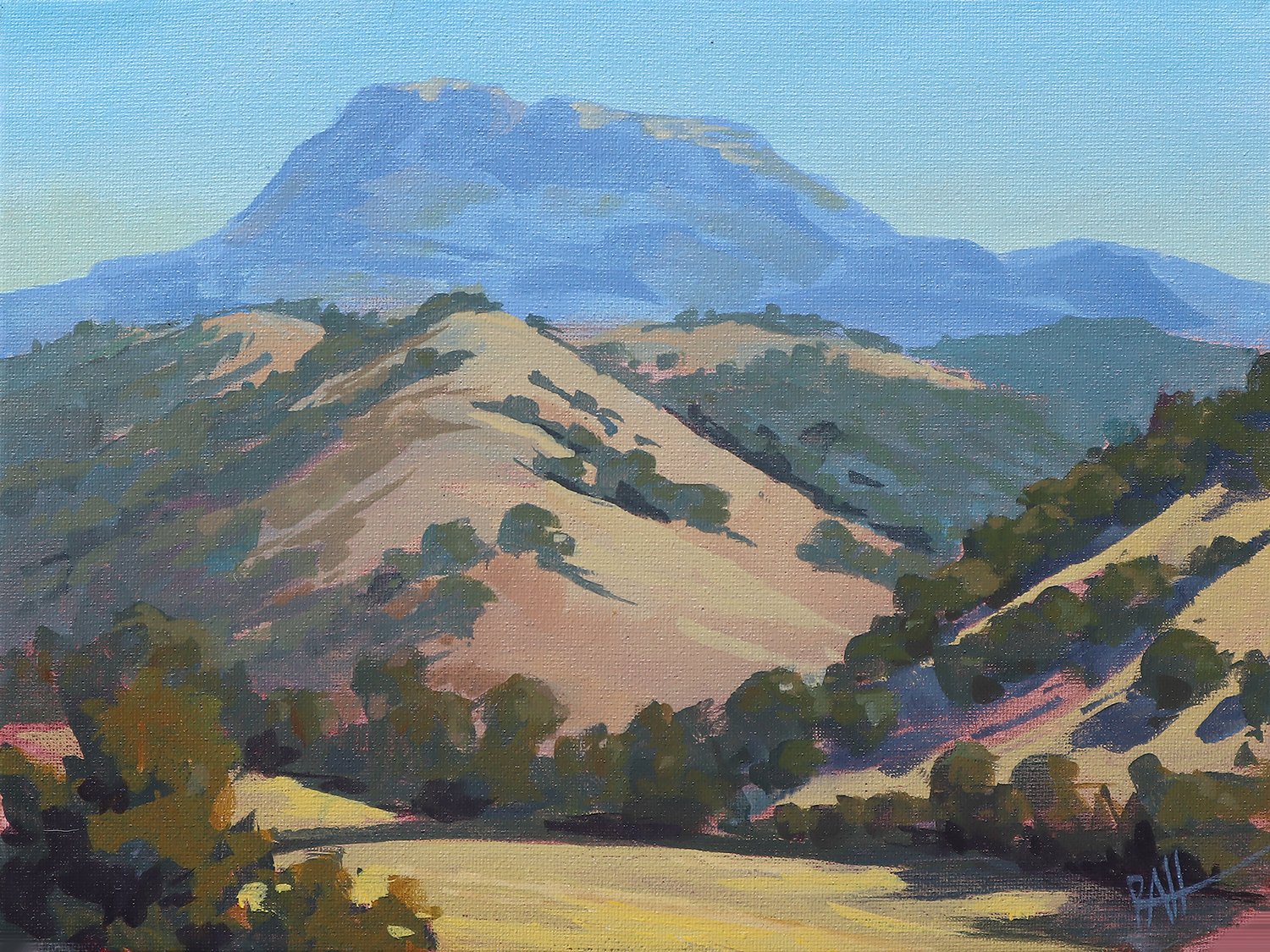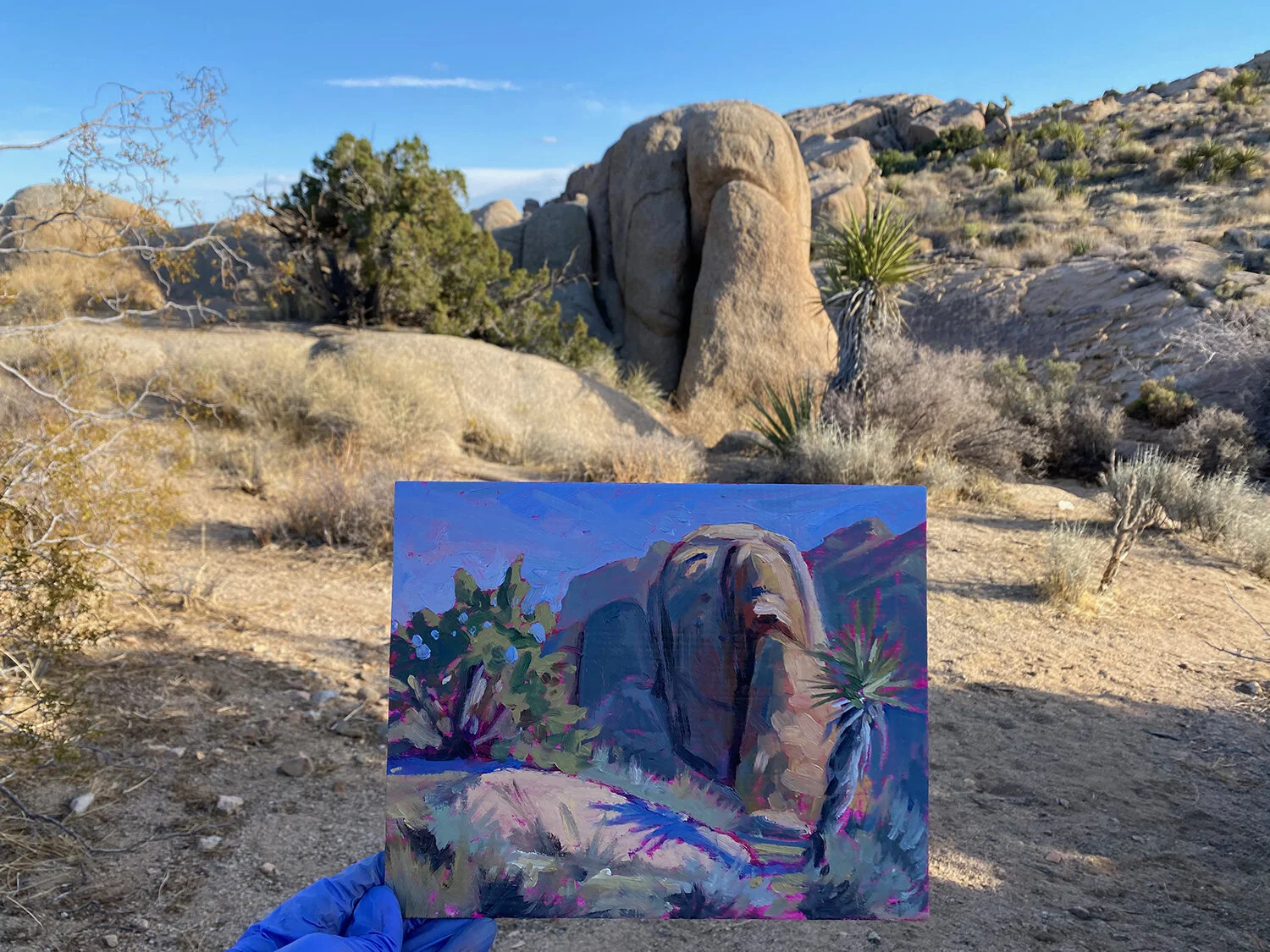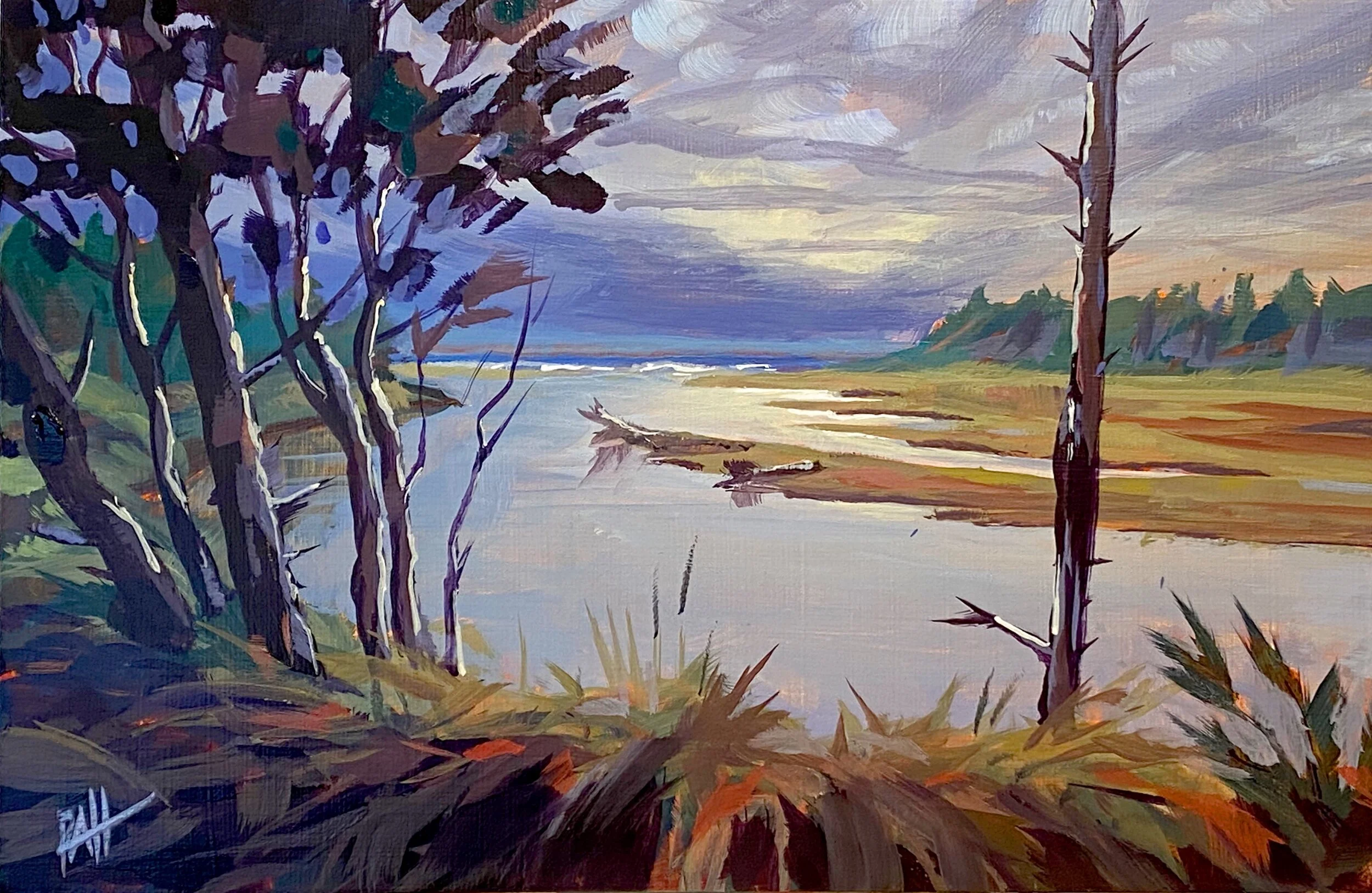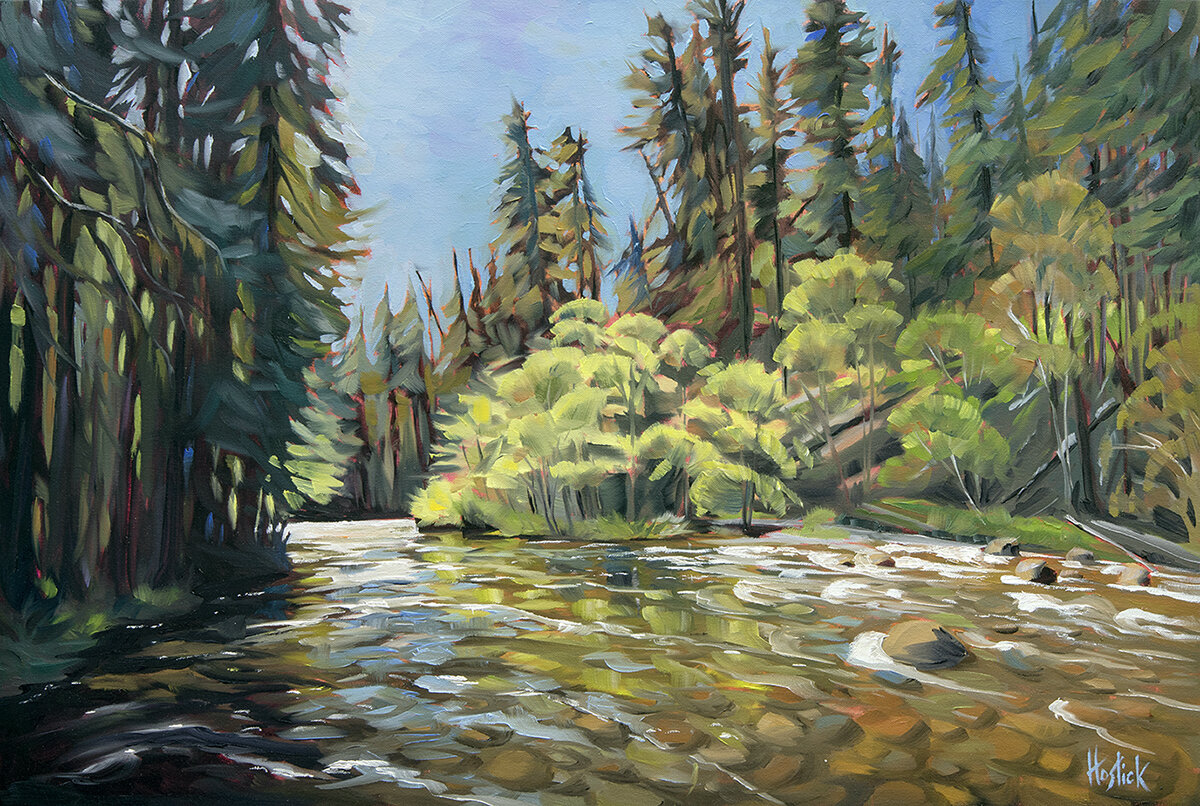If not for the elk trails, we would have given up for sure. Our feet sank deep into the spongy earth, following the tunnel-like trails through the brush. The sword ferns grew so tall – above our heads in many places – that we could only see a few feet ahead. Any moment we expected to come face to face with one of the resident elk.
Overhead, the branches of massive Sitka spruce trees arched across clearings, creating a cathedral-like quality within the forest. Giant trunks formed fluted columns. A small opening - like the cathedra’s nave - was decorated not with a gilded tomb but with the rust-colored core of a rotten tree long outdating the Gothic churches of Europe. Shafts of sunlight angled green-gold through a stained-glass mosaic of branches festooned with epiphytes.
We moved quietly, but not with intent. We’d simply lost our voices to the echo of birdsong and the rise and fall of a salty breeze rushing through the forest.
This was our second trip to Gwynn Creek in the spring of 2020. Our first trip was thwarted by the coastal lockdown in the early days of the pandemic. Every turnout, wayside, and dirt road along the coast was blocked with cones, tape, and dire warnings of consequences for breaching the closure. We heeded them dutifully, although we knew the only exposure we’d be getting was a possible overdose of natural beauty.
By the time we began our second trip in mid-June, the closure had lifted. And the coastal rainforest just south of Yachats was in full glory.
We explore wild places all the time just for the sake of adventure. This time, we were exploring as part of my partnership with Oregon Wild to draw attention to a proposal to extend National Wild & Scenic designation to more Oregon rivers (see my last post for more on the partnership). Gwynn Creek is on the list, along with many other pristine waterways that are still unprotected.
It was slow going since we’d left the trail an hour or so before. A few user trails led through the dense brush down to the water here and there, but these quickly petered out. The goal was to push upstream to see if we could find a place that captured the creek and forest at the same time – a place that was actually possible to reach and photograph. The only way forward was to find our way through the forest parallel to the stream.
Although beauty is everywhere, as I’ve mentioned a few times during this project it’s a huge challenge to capture all the elements of this landscape in one scene. This location is especially difficult – not only because the vegetation is so dense, but also because of the scale. Nothing in the landscape offers a reference to size, because everything is super-sized.
As a kid in the 1970s, I loved to watch a wonderfully cheesy program called “Land of the Lost.” It was a high point in network TV programming – for a six-year-old kid. I loved it for the claymation dinosaurs and awesome jungle scenes.
We’ve traveled around the world and spent quite a bit if time in tropical rainforests in Costa Rica, Australia, and Malaysia. Our own temperate rainforests right here in Oregon are every bit as impressive, and always bring to mind the primordial, dinosaur-haunted forests of imagination.
Sometimes I’d have to stop and get a frame of reference for scale. Some sword ferns, for example, sprouted fronds over six feet long from thigh-high mounds created by countless cycles of growth and re-growth. A single fern could fill a room 12 feet square.
Curious fact, nobody seems to know how old sword ferns can get. Some experts speculate that individual plants could be hundreds of years old. I’ve counted tree rings of cut logs in the area that are over 800 years old. Following the elk trails winding through boggy flats of ferns, bordered by towering spruce, I had to wonder if these ferns might have been growing since three hundred years before the time of Columbus.
Author and giant Sitka spruce near Gwynn Creek
Speaking of towering spruce, after maybe 90 minutes of bushwhacking, we eventually crossed the river and came upon one of the largest Sitka spruce trees I’ve ever seen. It stood alone in the middle of a clearing filled with sword fern. I dropped down into the ferns from our vantage point on a fallen log, and it was like dropping into a pond. I eventually made my way across and found the tree to be about 12 feet in diameter. The trunk spiraled upward like a grain silo. Check out this short video of the discovery.
Purple fox glove – normally a favorite of perennial border gardens – grew eight feet tall. Skunk cabbage sprouted from bogs, offering up yellow flowers the size of pitchers. Sometimes I had to do a double-take and walk up close to confirm what seemed to be true. Everything was huge.
It made me think of steelhead as long as your leg spawning in the shallow, vaguely tea-colored stream. Or of a 1200-pound Roosevelt elk tiptoeing around the other side of a giant fern. Or of black bears, cougars, and bald eagles – the charismatic faunal counterparts to the prodigious flora. Cue the claymation t-rex.
We scrambled over logs and through bogs, and with all this rubber-necking of awesome forest I eventually fell in the creek. Which actually made it easier to explore the creek by wading. Standing in the middle of the creek, of course, ended up being the secret to finding a scene that captured the place best.
In the final painting, I strived to portray the strong light of early June streaming down into the forested canyon of Gwynn Creek. Young alder sprout on the left bank among a sea of ferns, while a cliff rises on the right bank, topped with the pendulous branches of an ancient bigleaf maple. Sunbeams penetrate the creek here and there with a ruddy glow, and the motion of the coastal breeze swirls in the treetops.
I sincerely hope the Wild & Scenic designation proposal gains support in Congress, and this special place is preserved. There aren’t many like it left in Oregon. And the health of the waterway and the forest are closely linked. While the forces of nature will continue to shape the land, we can decide whether places like Gwynn Creek are worthy of passing on for what they are, for what they have been for centuries – our very own, life-sized land of the lost.
As of this writing, the original painting is still available for Gwynn Creek, as well as special-edition prints.
This and all other Wild & Scenic Rivers of Oregon artwork donates 25% to Oregon Wild to help support the proposed National Wild & Scenic designation for these special waterways.
































